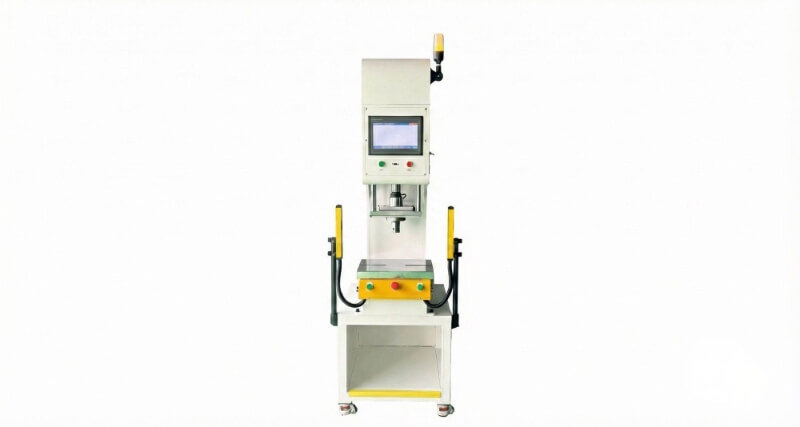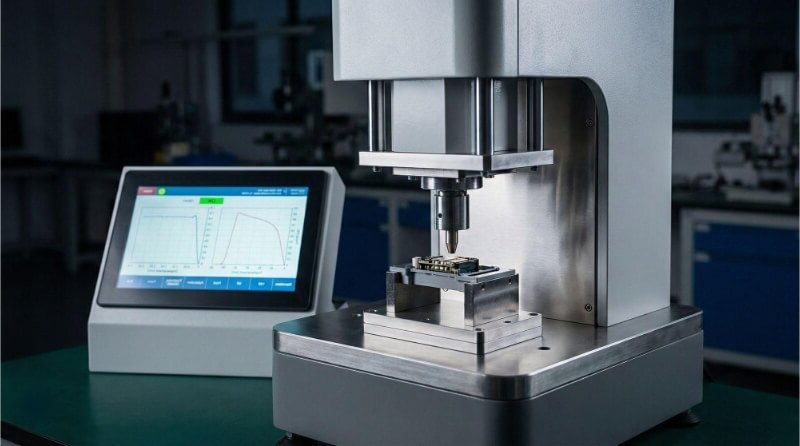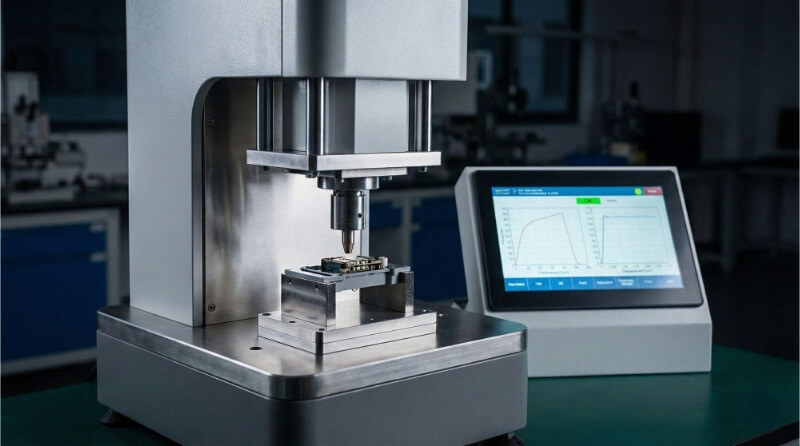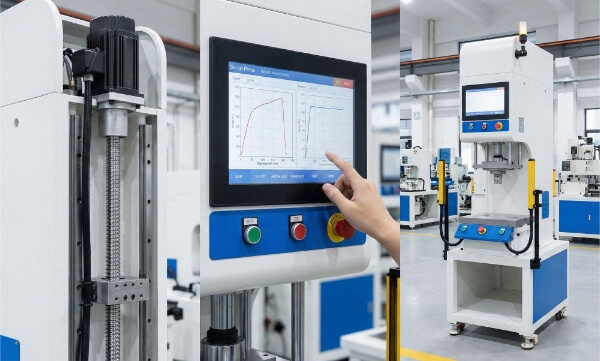In the manufacturing industry, metal fatigue, stress, and surface imperfections are common issues that can reduce the lifespan and reliability of parts. These challenges can lead to costly maintenance and unexpected downtimes.
Shot peening is an effective solution that significantly improves metal components’ fatigue strength and stress resistance. By understanding how shot peening works, we can better appreciate its value in extending the life and performance of parts.
Are you curious about how this simple-sounding process can profoundly impact metal parts? Let me explain further.
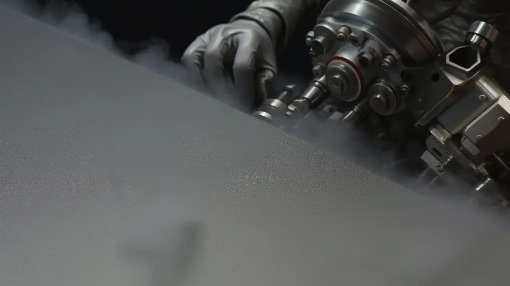
Understanding the Basics
What is Shot Peening?
Shot peening is a cold working process used to enhance the mechanical properties of metal parts. By bombarding the surface with small spherical media, known as shots, we create compressive residual stress layers that improve the part’s fatigue strength and resistance to stress corrosion cracking.
Defining Shot Peening: A Surface Engineering Process
In shot peening, we use high-velocity shots to strike the metal surface, creating tiny indentations. Each impact induces a layer of compressive stress, counteracting tensile stresses that lead to fatigue and cracking.
The Fundamental Mechanics Behind Shot Peening
The mechanics of shot peening involve using controlled streams of shots, typically made from steel, glass, or ceramic, to impact the metal surface. The energy from these impacts induces a beneficial compressive stress layer, which enhances the material’s resistance to fatigue, cracking, and corrosion. The process parameters, such as shot size, velocity, and coverage, are precisely controlled to achieve the desired effects.
Comparing Shot Peening with Shot Blasting
While both shot peening and shot blasting involve high-velocity particles, their purposes differ. Shot blasting is primarily a cleaning or surface preparation technique to remove contaminants and prepare surfaces for coating. In contrast, shot peening is a surface engineering process designed to improve the mechanical properties of metal parts by inducing beneficial compressive stresses.
The Shot Peening Process
Step-by-Step Overview of the Shot Peening Process
- Surface Preparation: We clean the part to remove contaminants that could interfere with the peening process.
- Media Selection: We choose the appropriate shot material and size based on the part’s requirements.
- Peening Setup: We set up the shot peening machine, adjusting parameters like shot velocity, coverage, and intensity.
- Peening Execution: We direct the stream of shots onto the part’s surface, ensuring uniform coverage to create the desired compressive stress layer.
- Post-Peening Inspection: We inspect the part to verify that it meets the desired specifications and quality standards.
Types of Media Used in Shot Peening
In shot peening, we use various types of media, each selected based on the specific application and desired outcomes:
- Steel Shots: Durable and cost-effective, ideal for general applications.
- Glass Beads: Suitable for delicate parts where minimal surface roughness is required.
- Ceramic Beads: Used for high-stress applications where superior durability and strength are necessary.
Equipment Essentials for Effective Shot Peening
Effective shot peening requires specialized equipment to ensure precision and consistency:
- Shot Peening Machines: These machines vary from manual to automated systems and are equipped with precise control mechanisms for shot velocity, coverage, and intensity.
- Nozzles and Turbines: Used to direct the shot stream accurately onto the part’s surface.
- Media Recyclers: Systems that collect, clean, and recycle the shot media for continuous use, ensuring cost efficiency and environmental sustainability.
- Inspection Tools: Instruments like Almen strips and gauges to measure the intensity and coverage of the peening process, ensuring compliance with specifications.
Benefits of Shot Peening
Enhancing Fatigue Strength: A Detailed Analysis
By introducing a layer of compressive residual stress on the surface, we counteract the tensile stresses that cause fatigue cracks to initiate and propagate. This compressive layer acts as a protective barrier, making it much more difficult for cracks to form and grow. As a result, parts can withstand higher stress levels and have a longer service life.
Reducing Stress Corrosion Cracking
Stress corrosion cracking (SCC) is typical in metals exposed to corrosive environments and tensile stresses. Shot peening effectively reduces SCC by introducing compressive stresses on the surface of the metal. These compressive stresses mitigate the tensile stresses that promote crack initiation and growth.
Improving Resistance to Foreign Object Damage
Foreign object damage (FOD) can occur when debris or other objects impact metal surfaces, causing dents, scratches, and cracks. Shot peening improves the resistance of metal parts to FOD by strengthening the surface layer. The compressive stresses induced by shot peening make the surface harder and more resilient to impact damage.
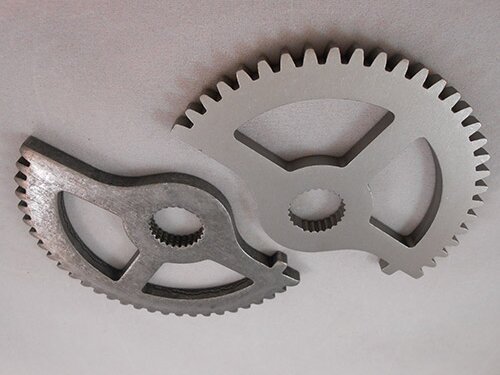
Advanced Techniques
Peen Forming: Modifying Part Shapes
Peen forming is an advanced shot peening technique used to modify the shape of metal parts. By carefully controlling the peening process, we can induce precise curvature and contours on the material’s surface. Peen forming allows us to achieve these shapes without additional machining or forming processes, saving time and reducing material waste.
Laser Peening vs. Traditional Shot Peening
Laser peening is a modern alternative to traditional shot peening, offering several distinct advantages. Instead of using mechanical shots, laser peening utilizes high-energy laser pulses to create shock waves on the metal surface. These shock waves induce compressive residual stresses similar to shot peening but with greater precision and control.
Advantages of Laser Peening:
- Higher Precision: Laser peening allows more precise control of the peening parameters, resulting in a more uniform and deeper compressive stress layer.
- Minimal Surface Damage: Unlike traditional shot peening, which can leave indentations, laser peening produces minimal surface roughness, preserving the part’s finish.
- Deeper Penetration: Laser peening can induce compressive stresses deeper into the material, enhancing fatigue resistance.
Practical Considerations
Setting Up a Shot Peening Operation
Setting up a shot peening operation requires careful planning and consideration of several key factors:
- Equipment Selection: Choose the appropriate shot peening machine based on the parts’ size, shape, and material to be treated. Options range from manual systems to fully automated machines with advanced controls.
- Media Selection: Select the right type and size of shot media (steel, glass, or ceramic) based on the specific application and desired outcomes.
- Parameter Settings: Establish precise control over parameters such as shot velocity, coverage, and intensity to ensure consistent and effective peening.
- Workspace Preparation: Ensure the workspace is clean, organized, and equipped with necessary safety measures, including proper ventilation and protective gear for operators.
- Training: Provide comprehensive training for operators on machine operation, maintenance, and safety protocols to ensure efficient and safe operations.
Quality Control Measures and Best Practices
Maintaining high quality in shot peening operations is crucial for achieving the desired results:
- Regular Inspections: Perform routine inspections of equipment and media to ensure they are in good condition and functioning correctly.
- Parameter Monitoring: Monitor and adjust peening parameters to maintain consistency and effectiveness.
- Almen Strips: Use Almen strips to measure and verify the intensity of the peening process, ensuring it meets the required specifications.
- Coverage Checks: Inspect parts for uniform coverage and proper indentation patterns to ensure complete and adequate peening.
- Documentation: Maintain detailed records of peening operations, including parameters, inspections, and results, to track performance and identify areas for improvement.
Troubleshooting Common Shot Peening Issues
Addressing common issues in shot peening operations helps maintain quality and efficiency:
- Inconsistent Coverage: Check for uniformity in shot flow and adjust nozzle alignment or machine settings to achieve even coverage.
- Media Wear: Regularly inspect and replace worn or damaged shot media to maintain consistent performance and prevent surface damage.
- Equipment Malfunctions: Conduct routine maintenance on shot peening equipment to prevent and address mechanical failures or malfunctions.
- Parameter Drift: Continuously monitor and adjust peening parameters to compensate for equipment performance or media condition variations.
- Surface Contamination: Ensure parts are thoroughly cleaned before peening to avoid contamination that can interfere with the process and affect results.
Applications of Shot Peening
Shot Peening in the Aerospace Industry
- Enhancing fatigue resistance of aircraft components.
- Improving the durability of landing gear parts.
- Strengthening turbine blades and engine parts.
- Extending the life of structural components and fasteners.
Uses in Automotive Manufacturing
- Increasing the lifespan of transmission gears.
- Strengthening suspension and steering components.
- Improving the durability of engine parts.
- Enhancing the performance of high-stress areas like crankshafts and connecting rods.
Advantages of Medical Device Components
- Enhancing the fatigue strength of surgical instruments.
- Improving the durability of orthopedic implants.
- Strengthening dental implants and components.
- Extending the life of critical medical device parts.
Conclusion
Shot peening is a powerful and versatile process that enhances metal components’ durability, strength, and performance across various industries. By inducing beneficial compressive stresses, we can significantly improve fatigue resistance, reduce stress corrosion cracking, and increase resistance to foreign object damage. From aerospace and automotive to medical devices, shooting applications are vast and impactful.
Do you need a reliable sheet metal parts manufacturer? Shengen is the place to go. We specialize in sheet metal laser cutting, bending, surface finish, and CNC Machining. Reach out to Shengen Today and seek help from professionals!
FAQs
What materials can be treated with shot peening?
Shot peening is primarily used on metals such as steel, aluminum, titanium, and nickel-based alloys. It can also be applied to some composites but is generally unsuitable for brittle materials.
How does shot peening differ from other surface enhancement techniques?
Shot peening induces compressive residual stress through mechanical impact, enhancing fatigue strength and stress corrosion resistance. Other techniques, like surface coating or nitriding, involve adding layers or altering the chemical composition of the surface, which can provide different types of protection and benefits.
What are the limitations of shot peening?
Shot peening is not suitable for all materials, especially brittle ones. It can also alter surface roughness, which may not be desirable for some applications. Additionally, precise control is needed to avoid over-peening, which can cause surface damage or dimensional changes.
How long does a typical shot peening session last?
The duration of a shot peening session varies based on the size and complexity of the part, the type of material, and the desired intensity. Typically, a session can last from a few minutes to several hours.
Can shot peening be used on plastic materials?
No, shot peening is not suitable for plastic materials. The process relies on inducing compressive stresses through mechanical impact, which can damage or deform plastic surfaces rather than strengthen them.
More Resources:
Difference between shot peening and shot blasting – Source: Superiorshotpeening
Laser peening vs. traditional shot peening – Source: CWST
Hey, I'm Kevin Lee

For the past 10 years, I’ve been immersed in various forms of sheet metal fabrication, sharing cool insights here from my experiences across diverse workshops.
Get in touch

Kevin Lee
I have over ten years of professional experience in sheet metal fabrication, specializing in laser cutting, bending, welding, and surface treatment techniques. As the Technical Director at Shengen, I am committed to solving complex manufacturing challenges and driving innovation and quality in each project.

